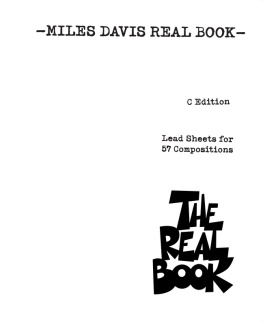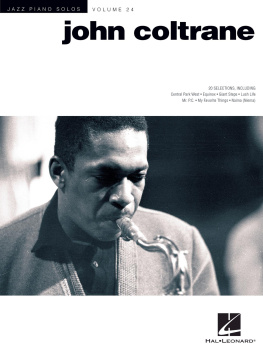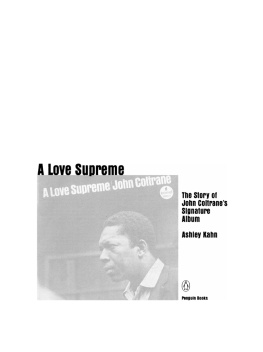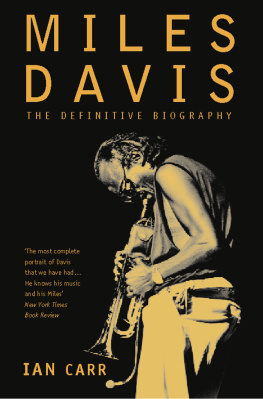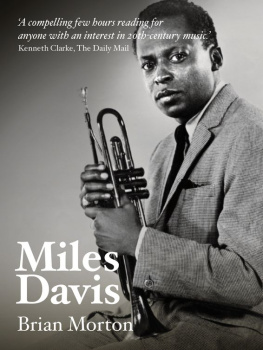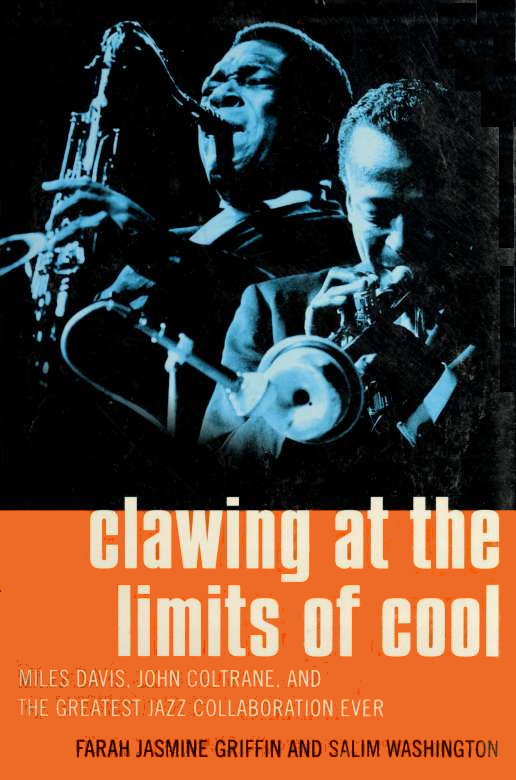
The author and publisher have provided this e-book to you for your personal use only. You may not make this e-book publicly available in any way. Copyright infringement is against the law. If you believe the copy of this e-book you are reading infringes on the authors copyright, please notify the publisher at: us.macmillanusa.com/piracy.
CONTENTS
For Blues People, especially those who suffered in the aftermath of Katrina
PRELUDE: THE HEAD
I think it was the beginning of another level of expression in this music.
RASHIED ALI
FOR MANY, MILES DAVIS AND JOHN COLTRANE were the last major innovators in jazz. Decades after their deaths, their shadows linger over modern music, affecting genres from soul and hip-hop to the experimental wings of European concert music. Within the world of jazz there has been no musician since whose influence runs as wide and as deep. The only artists whose contributions are comparable, in the sense of affecting the way other musicians think and play, are the great pace setters who came before themLouis Armstrong, Duke Ellington, Charles Parker, Billie Holiday, and a handful of others. And, like these giants, both Davis and Coltrane have become icons far beyond the world of jazzindeed, beyond the world of music.
In six years, Davis and Coltrane created a band that displayed a perfect mix of form and content, an ensemble that provided an aesthetic model for its time period while also providing artistic answers for the future. The balance between hot and cool playing, between head-spinning innovation and toe-tapping familiarity, the new feeling articulated by the band, all spoke to the times and to the necessities of black life in midcentury America.
Both Coltrane and Davis, known to musicians simply as Trane and the Chief, were artists whose approaches to their instruments inspired others not only to imitate their musical ideas, but also to mimic the minutiae of their personal technical mannerisms. These include everything from material changes, such as the widespread use of Harmon mutes for trumpets on ballads or the preponderance of alto and tenor saxophonists who now double on soprano saxophone, to sound production, such as Tranes hard edge or the Chiefs squeezed notes, and extend even to styles of melodic ornamentation.
In an art form that reveres the improvisations of outstanding soloists, their ability to create memorable statements places them in select company, and their solos are the normal entry point for appreciating their artistry. However, Trane and the Chief were innovative in other ways as well. They were leading improvisers, yes, but they also have become canonical as composers, bandleaders, and musical thinkers who never rested upon their laurels but continued to invent and try out new ideas. Although this is an impressive array of achievements with expansive implications for American music in general, their musical excellence alone does not exhaust their importance in our culture. Coltrane and Davis have iconic stature in American culture not only for their music, but for the examples they set as men and particularly as black men during one of the most socially dynamic periods in our history. Both the ways in which they navigated their art form vis--vis its artistic and social contexts and the ways in which their personas spoke, and continue to speak, to our culture remain important parts of their legacy.
Miless public persona, among other things, expresses the confidence and hipness that became so important to American masculinity, and did so in a way that was genuinely cool, virtually free of the predictable affectations of pretenders. The ways in which the Chief spoke and dressed inspired those for whom style mattered. When many of the great bandleaders required their musicians to wear uniforms, or at least suits, in order to be considered presentable, Miles wore richly colored sports coats made of fine fabric, and he expected his band mates to be equally well dressed. He attended to sartorial details such as the type of stitching on his shoes. His personal affect was direct and pointed; there were no gratuitous smiles or any of the pretenses of the entertainer. Miless manner seemed to say: The coon show is officially over; we are here to play.
While the Chief was savvy enough to capitalize upon his status, he didnt have to fake the funk. Miles Dewey Davis III was raised to be a confident black genius; sustained achievement had been a matter of course in his family for generations. He came into the world with a long pedigree and surrounded by flesh-and-blood examples of how to maintain dignity and to successfully maneuver the world even in harsh, racist environments. Breaking barriers, superb intellectual achievement, and financial success were all legacies bequeathed to Miles not only by his fathers generation, but by his grandfathers as well. His frank outspokenness, take-no-shit attitude, and self-confidence recalled the courage of politically minded artists like Paul Robeson. But, unlike Robesonthe outspoken actor, athlete, singer, and activistMiles was consistently able to capture the imagination of generations of black people as well as whites in such a way that his struggles against the unthinking and unhip in our culture were constantly celebrated. (It should be noted that unlike Robeson, Davis was never seen to be a major threat to U.S. capitalism, so he escaped the governmental harassment that haunted Robeson throughout much of his life.)
Saxophonist Carl Grubbs, who was Coltranes nephew by marriage, recalls of Miles Davis, We were not trying to be like Pops. Nobody wanted to be that guy sweating with the handkerchief. We wanted to be musicians because of people like Miles. Miles was hip. The music was hot and he was clean, standing there in a suit not even a suit, but a sports jacket. And he would look like this (Grubbs strikes a pose where Miles looks askance in an enigmatic way.) Davis biographer Quincy Troupe once admitted to the Chief that he and others in his generation who participated in the protests, sit-ins, and demonstrations of the civil rights movement looked to Miles as a model for how to think and behave under pressure. Troupes fellow St. Louisian saxophonist Oliver Lake, himself an innovative and stylish musician, recalls, I wanted to dress like Miles; be cool like Miles.
Even in our own time, through advertising campaigns for products as various as Gap clothing, Hennessy, and Apple computers, we can see Miles Daviss image used as a symbol for innovation and the courage to follow ones conviction. All the ads emphasize Miless uniqueness as an artist and persona. In the Gap series, he joins James Dean, Chet Baker, Marilyn Monroe, and Steve McQueennostalgic icons of a cool sexiness. The Hennessy series features strikingly beautiful African American celebrities such as Pam Grier and Marvin Gaye, with the caption Never Blend In. The computer ad is part of a 1998 print and television campaign featuring portraits of cultural icons known for brilliance, creativity, originality, and courage; these include Albert Einstein, Bob Dylan, Ted Turner, James Dean, Marilyn Monroe, Pablo Picasso, John Lennon and Yoko Ono, Thomas Edison, the Reverend Martin Luther King Jr., Amelia Earhart, Martha Graham, Maria Callas, and others. The figures are not identified by name; the simple, if ungrammatical caption Think Different accompanies each image. According to Allen Olivo, senior director for worldwide marketing communications at Apple, The premise is that people who use Apple computers are different and that we make computers for those creative people who believe that one person can change the world. By not identifying the figures in the striking black-and-white images, Apple executives also sought to establish their consumers as people in the know, as part of the cognoscenti.




